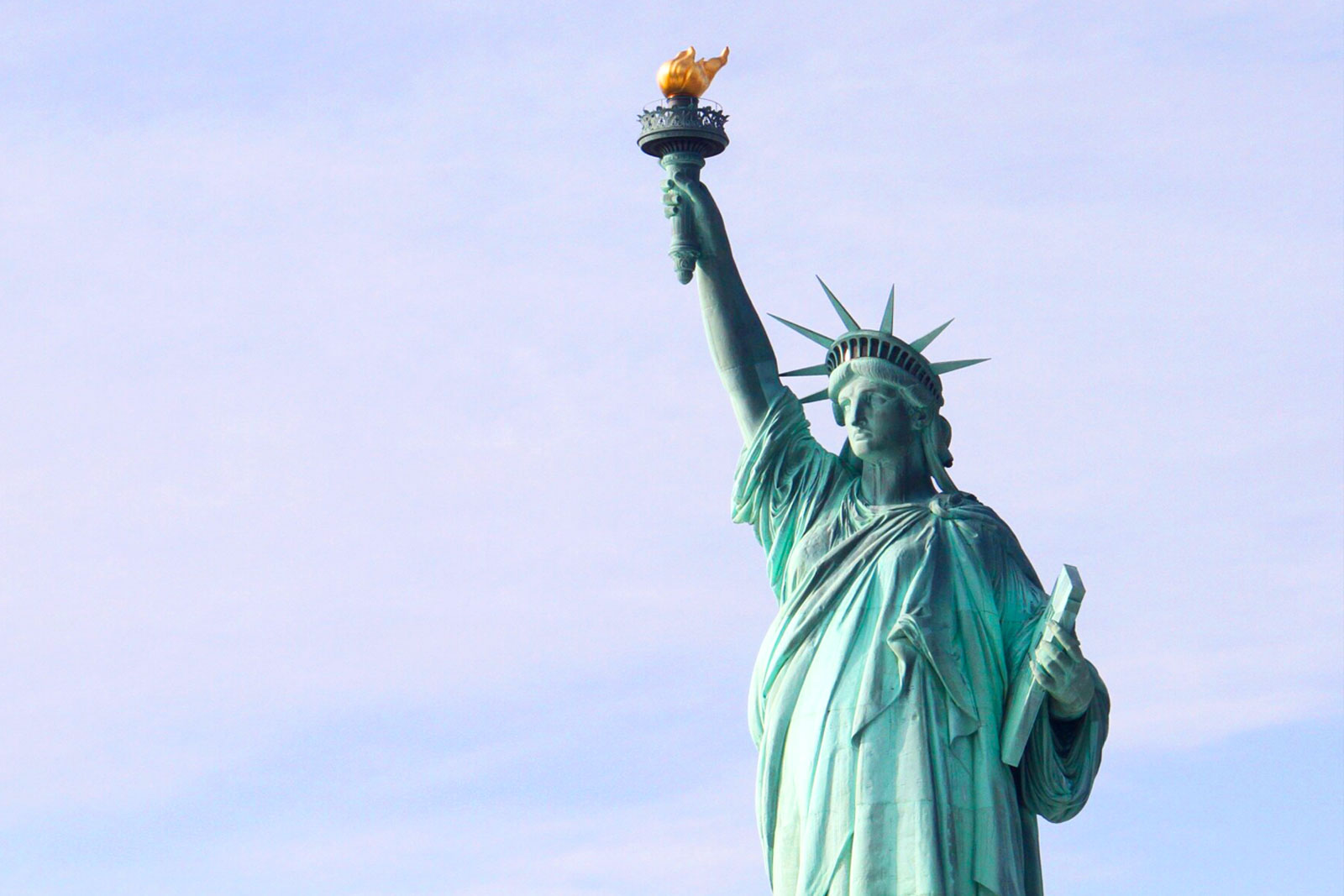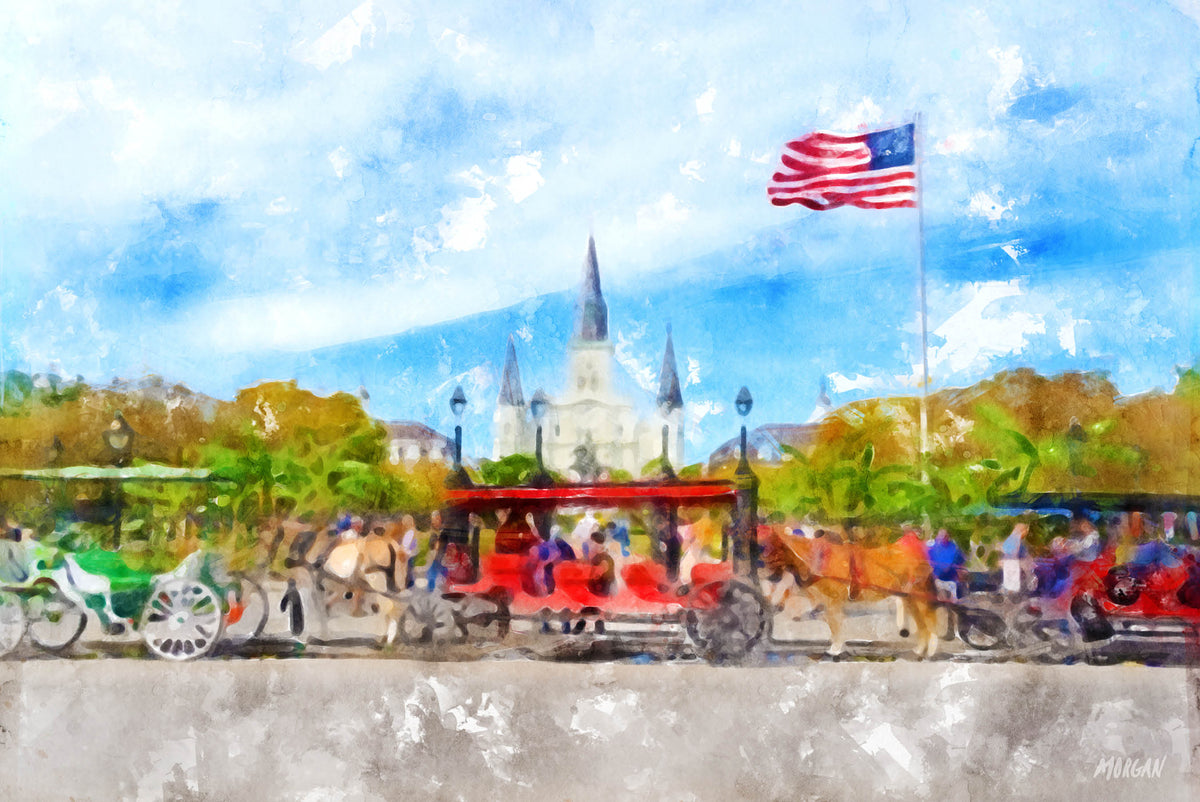
The Statue of Liberty, New York's iconic monument, greets over 3.5 million visitors each year. People from around the world come to marvel at this American beauty - a symbol of freedom and friendship.
Since Lady Liberty arrived in 1885, Americans have become fascinated with the statue. Although several conspiracy theories and disproven facts surround it, do you know her real secrets? Let's take a look at ten facts about the Statue of Liberty!
1. A Talking Statue of Liberty
In the 1870s, construction of the statue began in France, but across the pond, Thomas Edison was building something entirely different. He was busy working on what was then known as the "talking machine." And in 1878, Edison obtained a patent for the phonograph, an early version of the record player.
But what does Thomas Edison have to do with the Statue of Liberty? When Edison heard about the construction of the massive monument, he had a brilliant idea. He announced his plan to install an enormous phonograph within Lady Liberty.
Imagine walking along the Brooklyn Bridge and listening to a disembodied voice reciting speeches! Edison's phonograph would have achieved just that by giving the statue the ability to broadcast speeches across Manhattan. Ultimately, his idea didn't come to fruition.
2. Colorful Mistakes
New York City is often associated with yellow taxis, the neon hues of Times Square, and the green Lady Liberty. The soft green has become so synonymous with the statue that most people can't imagine it any other way. It even perfectly matches the color of American dollars!
But the infamous green is a mistake, or a happy accident, depending on how you look at it. The Statue of Liberty consists of 100 tons of copper, meaning she was originally a shiny reddish-brown color! Frederic Auguste Bartholdi, her creator, didn't realize that her final location would lead to a color change.
Over the years, the oxidization process deepened her shiny copper into a dull, dark brown. You can see the same process occur with new pennies that darken with time. And old pennies eventually turn green, just like Lady Liberty!
3. Buried Treasures
Is there buried pirate treasure on Liberty Island? That's what a famous urban legend tells us. And while it may or may not be true, there is a secret hidden underneath the Statue of Liberty!
The statue is a monument to freedom, and nothing says freedom more than the U.S Constitution. Tucked away underneath the 225-ton Lady lays a hidden box. Inside you'll find a copy of the U.S Constitution, a picture of Bartholdi, and 20 bronze medals.
But why is it there? No one really knows the answer to this, but it may be a time capsule to commemorate the unveiling. Or it might represent a connection between freedom and the U.S Constitution!
4. A Modern Upgrade
We often think of the Statue of Liberty as very old, but did you know that she got an upgrade in the 1980s? That's right, Lady Liberty's famous torch is a millennial born in the 80s!
When the original copper torch arrived in New York, the plan was to place lights underneath to create a glow. Instead, the U.S Lighthouse Board opted to cut holes directly into the copper, adding lights inside. The result wasn't spectacular, but it remained this way for years.
The torch suffered damage during World War I, but the following renovations weren't enough to transform it. Gutzon Borglum, Mount Rushmore's creator, attempted to fix the torch as well. He replaced much of the copper with beautiful amber glass, but this caused more wear in the long run.
In 1984, the torch took on its modern-day form. The original was removed and placed in the Statue of Liberty Museum. The current torch is a gold-plated copy of the original, lit by floodlights.
5. Hidden Meanings
Symbolism is often used in art to create a deeper meaning and connection to current events. The Statue of Liberty is no different in that sense and contains several hidden meanings. The infamous torch, for example, is meant to illuminate the path to enlightenment.
A common explanation for Lady Liberty's seven spiked crown is that it's a symbol of the world. Seven continents and seven seas, one for each spike of the crown. But Barry Moreno, author of The Statue of Liberty Encyclopedia, claims it's meant to show her divinity instead.
As an emblem of the abolition of slavery, the statue contains symbols to represent the celebration. The broken shackles show freedom from oppression, while her pose indicates moving forward. Although most people can't spot it right away, her foot is raised as if she's walking.
6. Liberty Island Amusement Park
If you've visited Liberty Island, its emptiness might have been an unexpected shock. A museum, a gift shop, and the statue - that's pretty much what you'll find there. But this wasn't the original plan!
When Bartholdi created the designs, he imagined a very different setting. His vision included a casino, music, and fun closer resembling Central Park. Instead, the island exchanged hands many times after the statue's arrival.
The Statue of Liberty operated as a lighthouse for several years during the early 1900s. Then it belonged to the U.S War Department because Fort Wood remained operational. Finally, in 1933, the National Parks Service took over, making it into the tourist destination it is today.
7. Unpopular Reputation
We can't imagine a New York City without the Statue of Liberty, but she wasn't such a fan favorite in the beginning. Various groups disagreed with the message and claimed that freedom and equality didn't exist in America.
One of these groups was the Suffragettes, who fought for equality and the right to vote. Many women weren't able to attend the unveiling and official dedication of the statue. A group of New York Suffragettes even chartered a boat to see the new monument!
In 1882, the government passed the Chinese Exclusion Act. This resulted in a lot of anger because the statue has been assembled by immigrants. A large part of them were Chinese immigrants.
African-American-owned newspapers circulated condemning the statue. They had yet to experience the freedom and equality that the Statue of Liberty advertised. Safe to say that Lady Liberty started with a rocky reputation.
8. A New Home
Frederic Auguste Bartholdi chose New York harbor as the final location. But due to many financial setbacks in New York, the statue was almost relocated to other cities! Pretty shocking for the golden city that's now the world's second-largest economy.
The United States government refused to pay for the figure, citing disagreement on budgets. New York City also refused to finance the statue, so Bartholdi was left to crowdfund Lady Liberty. Both Boston and Philadephia jumped at the chance to pay, as long as she stood in their cities.
In the end, Joseph Pulitzer helped Bartholdi's NYC dreams become a reality by holding a fundraiser. He ran an ad in his newspaper, the New York World, urging citizens to donate and raised over $100,000. Can you imagine New York if the Statue of Liberty had ended up in Boston or Philadelphia?
9. Light the Way
The Statue of Liberty's life as a lighthouse was short and underwhelming. In 1886, President Cleveland announced that the statue belonged to the Lighthouse Board. At the time, they controlled the northwest part of the island.
The problem was that no one could figure out how to light it successfully. The newly-invented electric lights seemed like the most obvious idea, but the results were disappointing. The first attempt left the upper half of the statue in total darkness and didn't provide enough light.
The lighting problems were solved with time and experimentation. But over the next few years, it became too expensive to run and maintain the statue as a lighthouse. In 1901, the War Department took over and held onto it until 1933.
10. Off With Her Head
Our generation has only seen the Statue of Liberty as one, fully-assembled structure. But this wasn't originally the case! As Bartholdi was trying to raise money to finish his grand gift, he debuted smaller parts first.
Lady Liberty's head was put on display in Paris at the International Exposition in 1878. She sat in the garden at Trocadéro Palace, where locals affectionately called her "The Lady of the Park." As construction continued, Parisians fell in love with her and didn't want to see her go!
The Statue of Liberty's torch was also shown at the Philadelphia Exposition in 1876. Although the torch arrived late, it quickly became the most popular sight at the Expo. Visitors were allowed to climb inside for free, and souvenir stands popped up alongside the piece.
Did These Facts About the Statue of Liberty Surprise You?
Lady Liberty certainly has a long, fascinating history! Her humble beginnings as nothing but a head at the Paris Expo led to the symbol of freedom that she represents today.
Did these facts about the Statue of Liberty leave you wanting more? Imagine waking up every day and seeing Lady Liberty right in the comfort of your home! Our Liberty for All print is a stunning shot of our favorite Lady in all her glory.

Hang it on your wall, display it on a bookshelf, or gift it to an NYC-obsessed friend! Shop all the New York City prints here.




